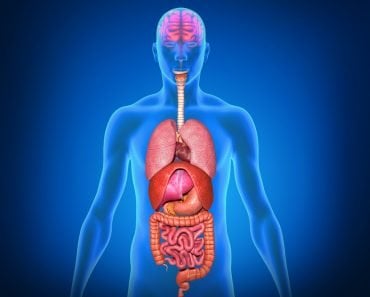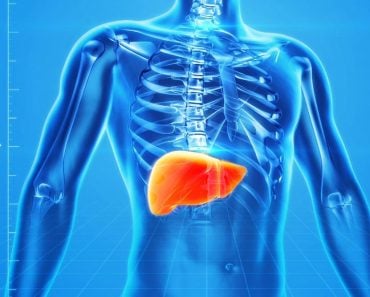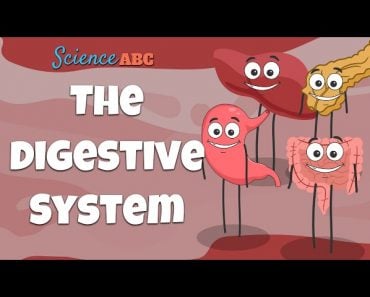Table of Contents (click to expand)
The appendix is a small, tube-like organ that is located near the junction of the small and large intestine. Although the exact function of the appendix is still unknown, it is thought to be involved in the immune system and in the early development of the fetus.
Unlike the common belief that the appendix is a vestigial organ, recent research has shown that the appendix does have a number of important immune effects and other applications, both for developing fetuses and grown adults.
There are many parts of the body that most people understand. Our lungs allow us to breathe and transfer oxygen to the blood, while the skin protects us from external forces and pathogens, and facilitates perspiration, among others things. However, there are also those strange parts of the body that remain somewhat mysterious. With the exception of certain parts of the brain, one of the most intriguing parts of the body is the appendix.
You might know you have one, and have likely heard some stories about it, but the question is, are they true? What does the appendix actually do?
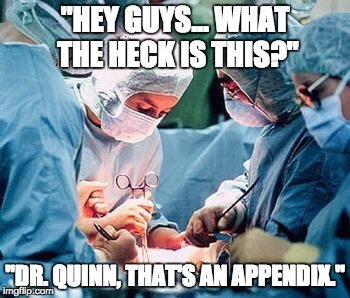
Recommended Video for you:
What Does Your Appendix Do?
For those countless thousands of people who had their healthy appendix removed to prevent future bouts of appendicitis, we have some bad news for you. As an adult, the appendix actually serves a number of important functions, provided it remains healthy.
First and foremost, the appendix is a great storehouse for lymphocyte tissues, and throughout the majority of your life, the appendix aids in the production of certain lymphocytes, which are a type of white blood cell. In the early developmental years, however, the appendix appears to be a place where the body can expose white blood cells to various pathogens and foreign substances, which will lead to the creation of antibodies.
Recent research has also shown that the appendix creates key molecules that direct and transport white blood cells to where they are needed in the body. Clearly, a healthy appendix in those first few years can mean a healthier immune response throughout your entire life.

Furthermore, as an adult, the appendix works as a sort of independent immune system, which is able to more carefully filter and respond to potentially unwanted materials in the food that we eat. By helping to manage the production of antigens and the immune response of the gut, the appendix can also strengthen the body against autoimmune diseases.
As a fetus, the appendix also has a critical function – holding endocrine cells. These early hormonal bursts in a fetus help to establish homeostatic controls and metabolic processes that are needed for normal development.
Finally, the appendix can be used in various repair procedures for parts of the gastrointestinal system. Due to the unique consistency and shape of the appendix, surgeons have cleverly used it to replace sphincter muscles and ureters, when necessary, to maintain a more normal quality of life. The flexibility of the appendix is remarkable, and it is one of the few organs that can shift their function. Perhaps some of that is due to the “vestigial” nature of the appendix, because the lack of an appendix doesn’t have any noticeable effects on the body.
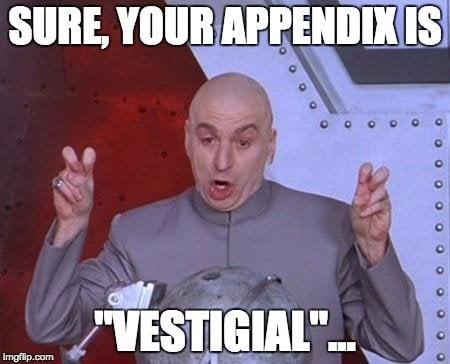
Some people do report greater gastrointestinal problems as they age, and a higher rate of autoimmune diseases, but there are also many cases where people who have had their appendix removed suffer no side effects. Suffice to say, given what we’ve recently discovered about the many potential functions and uses of the appendix, these organs are rarely removed during a related surgery if they are still healthy.
While appendicitis is a serious threat, and can be very dangerous, most doctors now suggest keeping that not-so-vestigial organ inside for as long as you can.
The Vestigial History Of The Appendix
You likely learned about vestigial organs in your high school science class, and even heard about some of the vestigial parts of the human body, like the wisdom teeth, tailbone, tonsils and male nipples, but the most common example of a vestigial organ used to be the appendix. By definition, a vestigial organ is a physical manifestation of an inherited trait that has become mostly or completely obsolete throughout the course of its evolution.
Humans still have certain elements from our primate cousins and earlier mammal forms that we simply don’t use anymore. In terms of evolution, their presence isn’t decreasing our fitness, so while their function may no longer be necessary or viable, some parts of those organs/traits remain. (You might wanna check out 6 Body Parts and Organs That Humans Do Not Need)
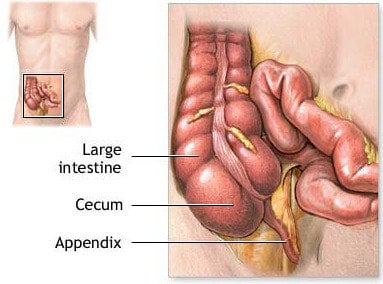
Located near the junction of the small and large intestine, the appendix is a tube-like structure that is approximately 5-20 cm in length. In early medical research into the function of organs, the unique shape and placement confused researchers. The appendix didn’t appear to have any real use, and was designated as a vestigial organ for decades.
For years, the appendix was regularly removed during other invasive surgeries, and this was seen as a preventative measure for appendicitis. This is the most common affliction of the appendix, and involves an inflammation of this small organ. This typically requires emergency surgery, not only because the condition is painful, but also because a rupture of the appendix can release infectious materials into the body cavity and gastrointestinal system. This can lead to serious complications and infections, such as peritonitis, which can be deadly. Removing a “useless” organ during a related operation seemed like a good preventative procedure.

Even in the early part of the 21st century, people were widely taught that the appendix served no real purpose in the body, making it the most famous and well known vestigial organ. Some people believed that the appendix was a storage area for beneficial bacteria, which would be able to restart or repopulate the digestive tract in the case of a serious illness. However, this was hotly contested by those who argued for the vestigial nature of the appendix.
As it turns out, the appendix is far more important than anyone ever knew…
References (click to expand)
- Mizumoto, T. (1976). B and T Cells in the Lymphoid Tissues of Human Appendix. International Archives of Allergy and Immunology. S. Karger AG.
- Ackerman, G. A. (1966, January). The origin of the lymphocytes in the appendix and tonsil iliaca of the embryonic and neonatal rabbit. The Anatomical Record. Wiley.
- Dagash, H., Sen, S., Chacko, J., Karl, S., Ghosh, D., Parag, P., & MacKinnon, A. E. (2008, February). The appendix as ureteral substitute: A report of 10 cases. Journal of Pediatric Urology. Elsevier BV.
- [Endocrinocytes of the appendix in the human fetus].
- Appendix Isn't Useless At All: It's A Safe House For Good ....
- Sarkar, A. (2015). A Glimpse Towards the Vestigiality and Fate of Human Vermiform Appendix-A Histomorphometric Study. Journal Of Clinical And Diagnostic Research. JCDR Research and Publications.


